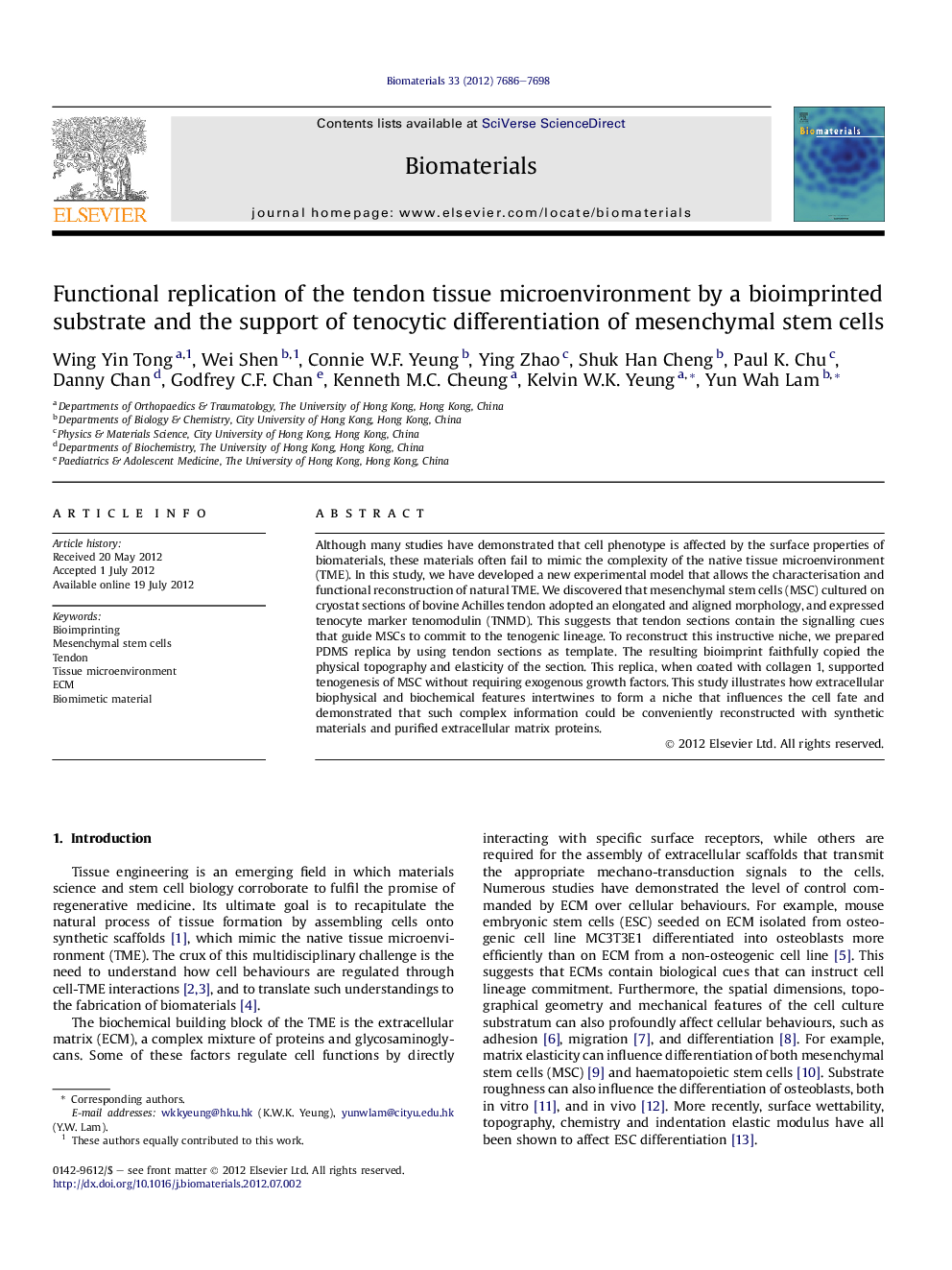| Article ID | Journal | Published Year | Pages | File Type |
|---|---|---|---|---|
| 6486 | Biomaterials | 2012 | 13 Pages |
Although many studies have demonstrated that cell phenotype is affected by the surface properties of biomaterials, these materials often fail to mimic the complexity of the native tissue microenvironment (TME). In this study, we have developed a new experimental model that allows the characterisation and functional reconstruction of natural TME. We discovered that mesenchymal stem cells (MSC) cultured on cryostat sections of bovine Achilles tendon adopted an elongated and aligned morphology, and expressed tenocyte marker tenomodulin (TNMD). This suggests that tendon sections contain the signalling cues that guide MSCs to commit to the tenogenic lineage. To reconstruct this instructive niche, we prepared PDMS replica by using tendon sections as template. The resulting bioimprint faithfully copied the physical topography and elasticity of the section. This replica, when coated with collagen 1, supported tenogenesis of MSC without requiring exogenous growth factors. This study illustrates how extracellular biophysical and biochemical features intertwines to form a niche that influences the cell fate and demonstrated that such complex information could be conveniently reconstructed with synthetic materials and purified extracellular matrix proteins.
